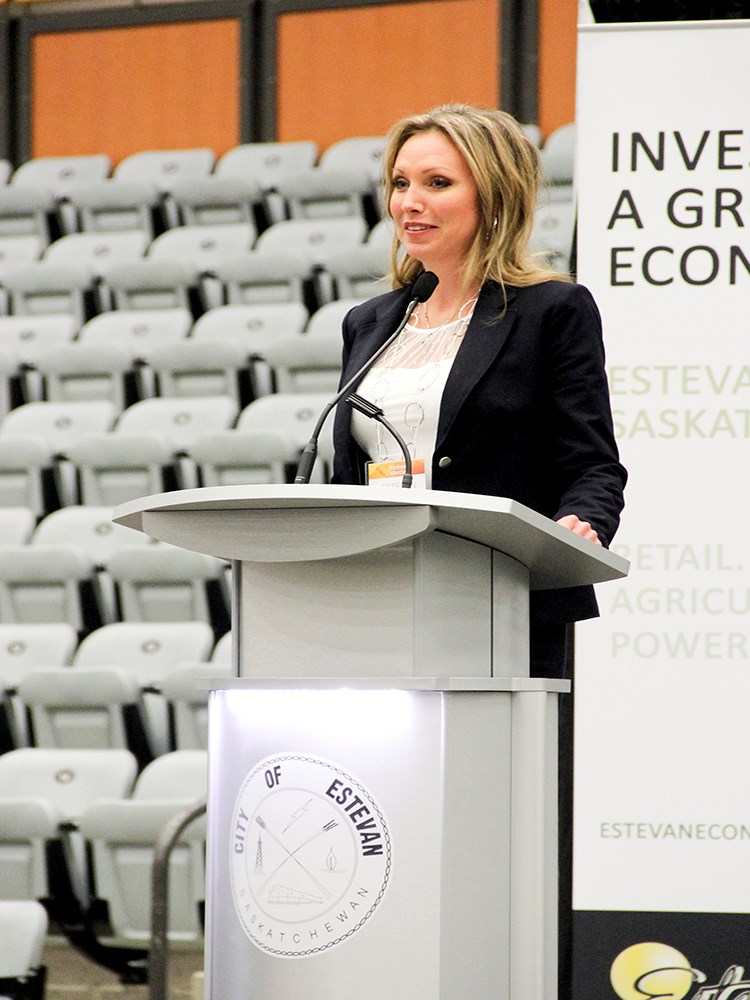Kirsten Marcia looks forward to the day when the Deep Earth Energy Corp. will open a geothermal demonstration project in Estevan, which would be the first geothermal power producing facility of its kind in Canada.
Marcia, speaking with the Mercury last week, said they are currently raising capital so they can move into the next phase, which is their bankable feasibility study. It’s an $8 million component of the project that requires a strategic partner.
“It includes the drilling of a very deep 3,000-metre production well and approximately a 1,000-metre injection well,” she said. “It takes it to the stage where, for this first plant, it shouldn’t require any more equity to get the plant up and running.
“The idea is once we’re bankable, then continued federal funding can support this project, along with conventional bank debt. So this next phase is so important as far as proving this project works, getting it to the finish line, generating revenue and producing power.”
Marcia, who is a former Estevan resident, revealed plans several years ago to have a five-megawatt geothermal demonstration project constructed south of Estevan near the Boundary Dam Power Station. It would be the first project of its kind in the country.
While it would generate about five megawatts, the size of each plant can be ramped up based on the number of wells drilled.
“If it makes sense at a location to build a 10 or a 15-megawatt plant, and that’s what the economics suggest is the right thing to do, then certainly that’s just a function of additional wells being drilled,” said Marcia.
Marcia would love to see the drilling program begin in April.
“The program will include an initial seismic program that’s going to take about two months,” said Marcia. “We believe the project area has trade seismic that we’ll purchase first as part of our study.”
Then the initial production well, the coring, testing and engineering will follow. The injection well will be drilled and the final engineering and redesign of the project will occur.
“In all, the bankable feasibility study will be a 10 to 11-month project,” said Marcia.
Deep Earth’s efforts received a boost last month when SaskPower revealed its plans to have 50 per cent of its power generated by renewables by 2030. Wind, solar, hydroelectric and geothermal were all part of the plan.
“I think it’s wonderful that SaskPower is weighing a number of options for our future grid,” said Marcia. “We need to find and replace new power sources. The fact that they’re including renewables such as geothermal, additional wind and new solar is great.”
Including geothermal in the power options speaks highly of the project, she said, and they’re excited to see it launch.
Geothermal doesn’t use fossil fuels, but with the technology they have, it’s going to boost the economy and create jobs.
Marcia described geothermal as a “wonderfully nimble” generating system, especially with the resource they have. They’re drilling into a “deep, hot pancake,” she said, and they have the ability to position the drills within a wide range in southern Saskatchewan, which can be scaled to meet the needs of SaskPower.
“One of the wonderful merits of these projects is it’s baseload power that runs 96 per cent of the time, and has the ability to be quite flexible,” said Marcia. “The competitive advantage of geothermal over a lot of the renewables is that the capacity factor, being baseload, makes it really attractive.”
While there is a larger start-up cost than there is for wind or solar, the payback is more attractive because of its ability to supply baseload power.
The estimated cost to get the five-megawatt demonstration project going is $40 million.




